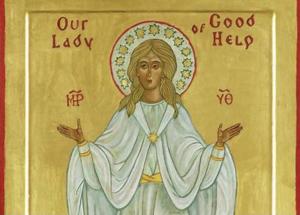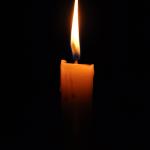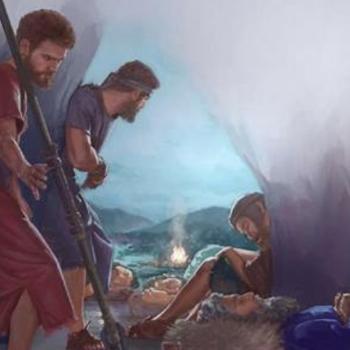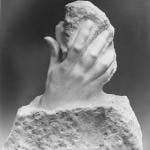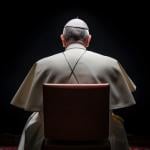Solemnity of the Assumption of the Blessed Virgin Mary
The queen stands at your right hand, arrayed in gold (Ps. 45:9).
After years of answering questions from Catholic Answers’ clients about unapproved and disapproved Marian apparitions in the United States (such as those reported in Bayside, New York; Conyers, Georgia; and Scottsdale, Arizona), I was delighted in 2010 when I heard that a bishop in Wisconsin had approved a Marian apparition in his diocese. I had never heard of the nineteenth-century apparitions of Our Lady to a Belgian immigrant named Adele Brise, and quickly read up on the story at the web site of the shrine maintained in Champion, not far from Green Bay.
As I dug through the site, I was somewhat bemused to find images of the Virgin Mary without her customary veil. When I read the story of Mary’s appearance, I found out why. Adele Brise reported that the woman she met in the Wisconsin woods had “long, golden, wavy hair [that] fell loosely around her shoulders.” Unlike most seers of approved apparitions, Brise, age 28 at the time, was a mature woman by the standards of her day. Unbound, uncovered hair would have made a significant impression on her, given that most adult women of that era and place were expected to pin up their hair and cover it with a hat or bonnet while outdoors.
Wow, that was cool, I thought. At that point, I had nearly a decade’s worth of experience dealing with fundamentalist Catholics pushing a narrative of Marylike Standards for Modesty in Dress, in which the Virgin was used as a sock puppet for telling Catholic women to pull up their necklines, ditch their trousers, and wear skirts that fell to their ankles. Oh, and veil. Because that’s what Mary did. Supposedly.
I was so impressed to find an approved apparition in which Christ’s Mother defied expectations by letting down her hair that I pointed to the example of Our Lady of Good Help (as she became known from the apparitions to Adele Brise) in an article I wrote on modesty for Catholic Answers. For good measure, I also threw in the example of Our Lady of La Vang, an eighteenth-century approved apparition, in which Mary wore trousers beneath a long robe, as was commonplace in that era for women in Vietnam.
For years after, whenever I needed to respond to the Catholic modesty squad on the issue of veiling, I’d invariably refer to Our Lady of Good Help. Then I started noticing something strange.
It became really hard to find images of Our Lady of Good Help without a veil. At some point, images of the bareheaded Lady of the apparitions apparently disappeared from the shrine’s site. If the original description by Adele Brise that the Lady she saw had “long, golden, wavy hair [that] fell loosely around her shoulders” still appears in the shrine’s online materials, which is where I originally read it, then I can no longer find it. As of this writing, Google Images had exactly one image of a bareheaded Our Lady of Good Help. The rest show her with long, blond locks but with veil on top—looking to me for all the world like a fig leaf covering the groin of Michelangelo’s David.
Was it possible? Had conservative Catholics complained about the bareheaded Lady seen by Adele Brise and demanded she be covered? Well, maybe. I can’t say, for sure. But it wouldn’t surprise me.
Okay, Michelle, why should it matter whether prigs have insisted on veiling Our Lady of Good Help? Creative anachronism has long been deployed in artistic representations of the saints. The Virgin Mary didn’t come down from heaven to show off her hair to Adele Brise, did she? And, hey, you don’t actually think a first-century Palestinian woman was a blonde, do you?
Yes, I’ll concede that the Virgin doesn’t show off. And, yes again, I know that there’s no way the Virgin had blond hair during her earthly lifetime. But what if there was some important symbolism at work in how she chose to appear to Adele in the Wisconsin woods? What if the Virgin was trying to convey something important—something obscured by dropping a veil over her head?
Every summer, the shrine marks the Assumption of the Blessed Virgin Mary with an outdoor Mass and a eucharistic procession. Before the pandemic, hundreds of Catholics would descend upon the shrine every year to take part. The Assumption is of such importance to the shrine that the USCCB chose that day in 2016 to announce that the shrine had been designated as a national shrine.
In the psalm for the liturgy of the Solemnity, the response sung by the congregation is “The queen stands at your right hand, arrayed in gold.” Interesting, isn’t it, that Adele Brise saw the Virgin “between two trees in a bright light, clothed in dazzling white with a yellow sash around her waist and a crown of stars above her flowing blond locks”?
The bright light, the yellow sash, the crown of stars. They’re all golden, as was Mary’s hair in this apparition. That the Virgin appeared to Adele with flowing, golden hair might be an image of her glorified state, of the dogma that she’d been assumed into heaven, body and soul. She evidently appeared with uncovered, unbound golden-blond hair, “veiled” only by the stars, as a way of indicating that she had been raised to stand at the right hand of God, a place of authority and majesty—and no place for hiding away the natural “covering” God gave her (1 Cor. 11:15).
Our Lady of Good Help’s requests to Adele Brise were far more modest than those attributed to the Blessed Virgin in other approved apparitions. Adele’s Lady didn’t ask for a church to be built as she had at Guadalupe, she didn’t ask Adele to witness apocalyptic scenes as she did the children at Fatima. All she asked for was that Adele teach children their catechism, how to make the sign of the cross, and how to approach the sacraments. Adele was “to gather the children in the wild country to teach them what they needed to know for their salvation.”
In other words, the Lady asked that Adele teach children how they could one day join her in heaven, glorified themselves in body and soul. And that’s the message that is obscured when priggish fundamentalist Catholics take it upon themselves to drop a cloth over the Virgin’s head, thinking they’re doing her a favor by “correcting” her appearance to match their preconceived notions of how the Mother of God “ought” to appear.
Michelle Arnold was a staff apologist for Catholic Answers, a Catholic apologetics apostolate in the Diocese of San Diego, California, from 2003–2020, answering questions from clients about the Catholic faith via phone, letter, email, and online platforms. She contributed essays to Catholic Answers’ online and print magazines, and wrote four booklets for the apostolate’s 20 Answers series. Her 20 Answers booklets were on Judaism, the New Age, witchcraft and the occult, and the Church’s liturgical year. Now a freelance writer, editor, and proofreader, Michelle Arnold has a blog at the Patheos Catholic channel. A portfolio of her published essays is available at Authory.

